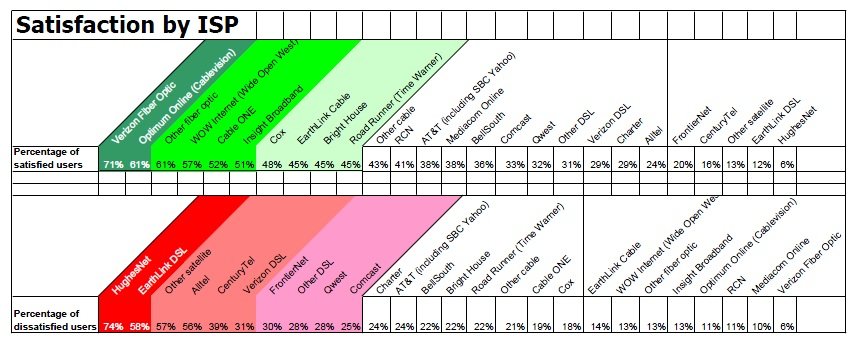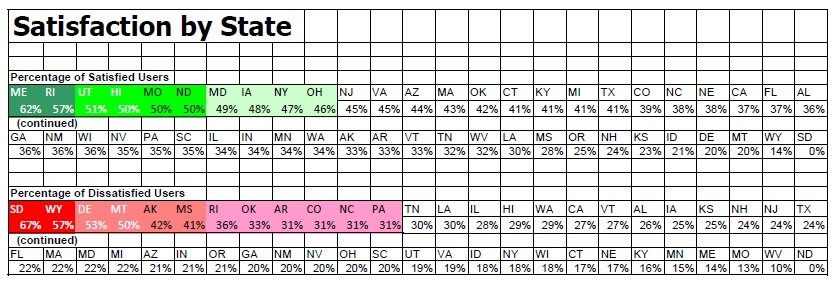Less than half of Americans surveyed by PC Magazine report they are very satisfied with the broadband speed delivered by their Internet service provider.
PC Magazine released a comprehensive study this month on speed, provider satisfaction, and consumer opinions about the state of broadband in their community.
The publisher sampled more than 17,000 participants, checking their actual broadband speeds, and questioned them about their overall satisfaction with their online access.
The findings indicate consumers live with what provider they can get. Even lower rated providers scored “satisfactory,” in part because consumers don’t have many choices with which to compare.
In the war between coaxial cable modem vs. copper wire DSL technology-of-the-1990s battle, PC Magazine declared the cable industry the winner, consistently delivering faster speeds more reliably than possible with telephone company DSL. Overall, the average cable speed was “688 Kbps, while the average DSL lets you surf at just 469 Kbps—cable connections, on average, are 47 percent faster.” Those speed measurements are based on actual web page and content delivery, not on marketed available speed.
In fact, users rated DSL an unsatisfying service, with only 20% of rural and suburban customers very impressed with DSL. But for many who have no other choice, 50% think it’s good enough.
Or better than nothing.
One DSL provider did extremely well speed-wise in PC Magazine‘s survey, however. Frontier Communications was rated as the fastest DSL provider in the nation, averaging “real-world” speeds of 724 Kbps, according to the survey. But even they could only score a 20% customer satisfaction rating, with 30% dissatisfied.
There was one technology that did much, much worse. Satellite broadband, the last possible choice for many Americans between dial-up and going without, is provided by companies like HughesNet and WildBlue, and they are unmitigated disasters in consumers’ eyes.
Just 6% of Hughes customers were satisfied, with a whopping 74% dissatisfied. That’s because satellite broadband is extremely slow, averaging just 145 Kbps, heavily capped, and very expensive. But for some rural Americans who live too far away from their local phone company central office, and will never see cable television, it’s likely their only choice. Even mobile broadband signals won’t reach many of these consumers.
So what is the good news from all of this? There is one technology that, hands-down, beats all of the rest — fiber optics to the home. The nation’s top-rated ISP in PC Magazine’s survey is Verizon FiOS, with 71% satisfied, and just 6% dissatisfied. Other fiber optic providers, mostly smaller local, regional, or municipal systems, scored 61% satisfaction. Just one cable company matched that rating – Cablevision’s Optimum Online.
AT&T, with a combination of DSL and their newer U-verse platform, did considerably worse, with 38% satisfied and 24% dissatisfied.
Clearly, subscriber satisfaction comes highest from fiber optic broadband.
In statewide rankings, it all boils down to where you live. The more populated states and those with large cities often scored higher than those with lots of wide open rural areas. The larger the community you live in, the better the chance for fast, quality service. In states like Wyoming or South Dakota, where more than 57% of customers reported dissatisfaction, it’s more about living with what you’re stuck with.


 Subscribe
Subscribe



